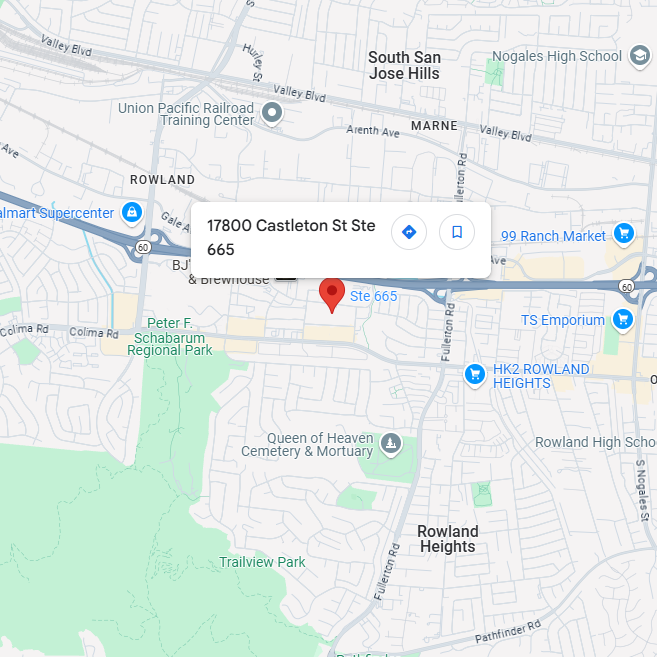EDITGENE CO., LTD

17800 Castleton St. Ste 665. City of Industry. CA 91748

info@editxor.com

+1-833-226-3234 (USA Toll-free)
+1-224-345-1927 (USA)
+86-19120102676 (Intl)

Technical Support

Support Center
Beijing Time: Monday to Friday, 8:00 AM - 6:00 PM
Toll-Free (USA): +833-226-3234
Direct Line (USA): +1-224-345-1927
Email: techsupport@editxor.com

After-Hours Support
Beijing Time: Monday to Sunday, 8:00AM - 6:00 PM
International Line: +86-19120102676
Email: info@editxor.com

Facebook Messenger
Reach out to us on Facebook Messenger for personalized assistance and detailed information.

Linkedin
Engage with us on LinkedIn for professional inquiries, the latest blogs, discoveries, and updates on our innovative work.
FAQ
What issues should be considered when culturing cells for gene delivery?
Maintaining the activity of cell cultures is crucial. Cells should not be allowed to reach confluence for more than 24 hours. Frozen new cells can restore transfection activity. The optimal cell plating density varies for different cell types or applications; however, for adherent cells, a confluence of 70% to 90% or a density of 5×10^5 to 2×10^6 suspended cells/ml typically yields good transfection results. It is important to ensure that cells are not fully confluent or in a fixed phase during transfection.
Can both dsDNA and ssDNA targets activate the trans-cleaving activity of Cas12a? Which has higher efficiency?
Both double-stranded DNA (dsDNA) and single-stranded DNA (ssDNA) targets can activate the trans-cleaving activity (also known as collateral cleavage) of Cas12a, similar to Cas12b. However, the efficiency differs: ssDNA targets activate Cas12b trans-cleaving activity more efficiently than dsDNA targets, while dsDNA targets activate Cas12a trans-cleaving activity more efficiently than ssDNA targets.
How long can CRISPR-related reagents and Cas proteins be stored?
CRISPR detection reagents:
1.The RPA isothermal amplification kit can be stored at -20°C for long-term storage.
2.Target plasmids can be stored at -20°C for long-term use.
3.Cas proteins are sensitive to repeated freeze-thaw cycles; it is recommended to aliquot into multiple tubes and store at -80°C, retrieving them as needed for experiments. For short-term use, they can be stored at -20°C.
4.crRNA is prone to degradation and should be stored at -80°C if not used in the short term.
5. Probes, being double-stranded DNA, are relatively stable and can be stored at -20°C.
1.The RPA isothermal amplification kit can be stored at -20°C for long-term storage.
2.Target plasmids can be stored at -20°C for long-term use.
3.Cas proteins are sensitive to repeated freeze-thaw cycles; it is recommended to aliquot into multiple tubes and store at -80°C, retrieving them as needed for experiments. For short-term use, they can be stored at -20°C.
4.crRNA is prone to degradation and should be stored at -80°C if not used in the short term.
5. Probes, being double-stranded DNA, are relatively stable and can be stored at -20°C.
What are the differences between Cas9, Cas12, and Cas13?
The main differences among Cas9, Cas12, and Cas13 lie in their action mechanisms:
· Cas12 is activated to cleave ssDNA trans-cleaving after binding with guide RNA and target DNA.
· Cas13 is activated to cleave ssRNA trans-cleaving after binding with guide RNA and target RNA.
· Cas9 has not been reported to exhibit trans-cleaving activity.
· Cas12 is activated to cleave ssDNA trans-cleaving after binding with guide RNA and target DNA.
· Cas13 is activated to cleave ssRNA trans-cleaving after binding with guide RNA and target RNA.
· Cas9 has not been reported to exhibit trans-cleaving activity.
How to Improve the Detection Sensitivity of Cas Enzymes?
1.Design an efficient crRNA sequence. Proper design and structure prediction using online resources can help select suitable crRNA to achieve good trans-cleavage activity of the Cas enzyme.
2.Choose an appropriate signal reporter substrate. Research indicates that using a 15 nt single-stranded DNA (ssDNA) as a reporter substrate maximizes the cleavage reaction rate of Cas12a, significantly enhancing the reaction rate compared to the commonly used 5-nt ssDNA.
3.Optimize reaction conditions and buffers. Adjusting the CRISPR reaction parameters, such as the ratio of Cas enzyme to crRNA, the concentration of the Cas enzyme, and the reaction temperature, can improve detection performance to some extent.
2.Choose an appropriate signal reporter substrate. Research indicates that using a 15 nt single-stranded DNA (ssDNA) as a reporter substrate maximizes the cleavage reaction rate of Cas12a, significantly enhancing the reaction rate compared to the commonly used 5-nt ssDNA.
3.Optimize reaction conditions and buffers. Adjusting the CRISPR reaction parameters, such as the ratio of Cas enzyme to crRNA, the concentration of the Cas enzyme, and the reaction temperature, can improve detection performance to some extent.
What is the difference between KO cell lines and gene knockout animal models?
KO cell lines are used for in vitro experiments, suitable for high-throughput screening and cellular studies, while gene knockout animal models are used for in vivo experiments to study gene functions within an entire organism and its interaction with the environment.
How to Design crRNA?
1.The design process can follow these steps:
1.Identify the target gene sequence.
2.Specify the Cas protein being used. Different Cas proteins require corresponding PAM (Protospacer Adjacent Motif) sequences; for instance, Cas12a needs the "TTTV" PAM sequence for target recognition.
3.Select the crRNA targeting region. Choose a 20 nt nucleotide sequence on the target gene that is adjacent to the PAM site and pairs with the complementary strand of the crRNA.
4.Combine the selected 20 nt target sequence (variable part) with the scaffold sequence (fixed part) to design the crRNA sequence.
5.Use online tools such as CRISPR design tools (e.g., CRISPOR, Benchling, etc.) to assist in designing crRNA. These tools can predict the efficiency and specificity of the sgRNA, helping to avoid potential off-target effects.
6.After completing the design, the synthetic crRNA sequence can be ordered from a synthetic biology company.
1.Identify the target gene sequence.
2.Specify the Cas protein being used. Different Cas proteins require corresponding PAM (Protospacer Adjacent Motif) sequences; for instance, Cas12a needs the "TTTV" PAM sequence for target recognition.
3.Select the crRNA targeting region. Choose a 20 nt nucleotide sequence on the target gene that is adjacent to the PAM site and pairs with the complementary strand of the crRNA.
4.Combine the selected 20 nt target sequence (variable part) with the scaffold sequence (fixed part) to design the crRNA sequence.
5.Use online tools such as CRISPR design tools (e.g., CRISPOR, Benchling, etc.) to assist in designing crRNA. These tools can predict the efficiency and specificity of the sgRNA, helping to avoid potential off-target effects.
6.After completing the design, the synthetic crRNA sequence can be ordered from a synthetic biology company.
How to choose the appropriate gene delivery method?
Selecting a suitable gene delivery system requires a comprehensive assessment based on specific experimental conditions, research objectives, and cell types. Quantitatively comparing various systems in terms of delivery efficiency, cytotoxicity, and stability is an important step in determining the choice.
Viral delivery systems are suitable for experiments that require high delivery efficiency and sustained gene expression, especially when cells can tolerate higher levels of cytotoxicity and immune responses. If lower cytotoxicity and immune response, along with ease of use and cost-effectiveness, are priorities, then a liposome-based gene delivery system should be chosen. For high delivery efficiency that involves delivering large DNA fragments, and if the user can accept a higher operational complexity, a gene gun delivery system is an optional method. If high delivery efficiency is needed while maintaining relative simplicity and no special equipment is required, then the electroporation delivery system may be a suitable choice.
Viral delivery systems are suitable for experiments that require high delivery efficiency and sustained gene expression, especially when cells can tolerate higher levels of cytotoxicity and immune responses. If lower cytotoxicity and immune response, along with ease of use and cost-effectiveness, are priorities, then a liposome-based gene delivery system should be chosen. For high delivery efficiency that involves delivering large DNA fragments, and if the user can accept a higher operational complexity, a gene gun delivery system is an optional method. If high delivery efficiency is needed while maintaining relative simplicity and no special equipment is required, then the electroporation delivery system may be a suitable choice.
How to choose the appropriate vector type?
When selecting a vector, consider the purpose of the experiment and the type of host cells. For example, plasmid vectors are commonly used for gene expression or amplification in bacteria, while viral vectors are more suitable for gene transfer in mammalian cells. Additionally, the vector's promoter, replicon, and antibiotic selection markers should be chosen based on specific requirements.
What host bacteria are used for vector construction in EDITGENE? What type of strains can customers use to amplify plasmid vectors?
During vector amplification, Escherichia coli (E. coli) strains are typically used. The commonly used strain for most non-recombinant vectors is DH5α, which is suitable for most applications. For recombinant vectors, such as lentiviral vectors and transposon vectors, the Stbl3 strain can be used for amplification. Stbl3 is a specialized E. coli strain derived from HB101, which has a mutation in the recombinase gene recA13, effectively suppressing recombination of long fragment terminal repeat regions and reducing the likelihood of erroneous recombination.
How to choose the appropriate vector type?
When selecting a vector, consider the purpose of the experiment and the type of host cells. For example, plasmid vectors are commonly used for gene expression or amplification in bacteria, while viral vectors are more suitable for gene transfer in mammalian cells. Additionally, the vector's promoter, replicon, and antibiotic selection markers should be chosen based on specific requirements.
What host bacteria are used for vector construction in EDITGENE? What type of strains can customers use to amplify plasmid vectors?
During vector amplification, Escherichia coli (E. coli) strains are typically used. The commonly used strain for most non-recombinant vectors is DH5α, which is suitable for most applications. For recombinant vectors, such as lentiviral vectors and transposon vectors, the Stbl3 strain can be used for amplification. Stbl3 is a specialized E. coli strain derived from HB101, which has a mutation in the recombinase gene recA13, effectively suppressing recombination of long fragment terminal repeat regions and reducing the likelihood of erroneous recombination.
What host bacteria are used for vector construction in EDITGENE? What type of strains can customers use to amplify plasmid vectors?
During vector amplification, Escherichia coli (E. coli) strains are typically used. The commonly used strain for most non-recombinant vectors is DH5α, which is suitable for most applications. For recombinant vectors, such as lentiviral vectors and transposon vectors, the Stbl3 strain can be used for amplification. Stbl3 is a specialized E. coli strain derived from HB101, which has a mutation in the recombinase gene recA13, effectively suppressing recombination of long fragment terminal repeat regions and reducing the likelihood of erroneous recombination.
What host bacteria are used for vector construction in EDITGENE? What type of strains can customers use to amplify plasmid vectors?
During vector amplification, Escherichia coli (E. coli) strains are typically used. The commonly used strain for most non-recombinant vectors is DH5α, which is suitable for most applications. For recombinant vectors, such as lentiviral vectors and transposon vectors, the Stbl3 strain can be used for amplification. Stbl3 is a specialized E. coli strain derived from HB101, which has a mutation in the recombinase gene recA13, effectively suppressing recombination of long fragment terminal repeat regions and reducing the likelihood of erroneous recombination.
Why choose lentivirus as a gene delivery tool?
Lentiviruses have high transduction efficiency and the ability to maintain stable gene expression over the long term, making them particularly suitable for cell types that are difficult to transfect. Furthermore, lentiviruses can integrate exogenous genes into the host genome, ensuring prolonged gene expression.





 Room 501, Building D, International Business Incubator, No.3 Juquan Road, Science City, Huangpu District, Guangzhou, Guangdong, China 510663
Room 501, Building D, International Business Incubator, No.3 Juquan Road, Science City, Huangpu District, Guangzhou, Guangdong, China 510663
